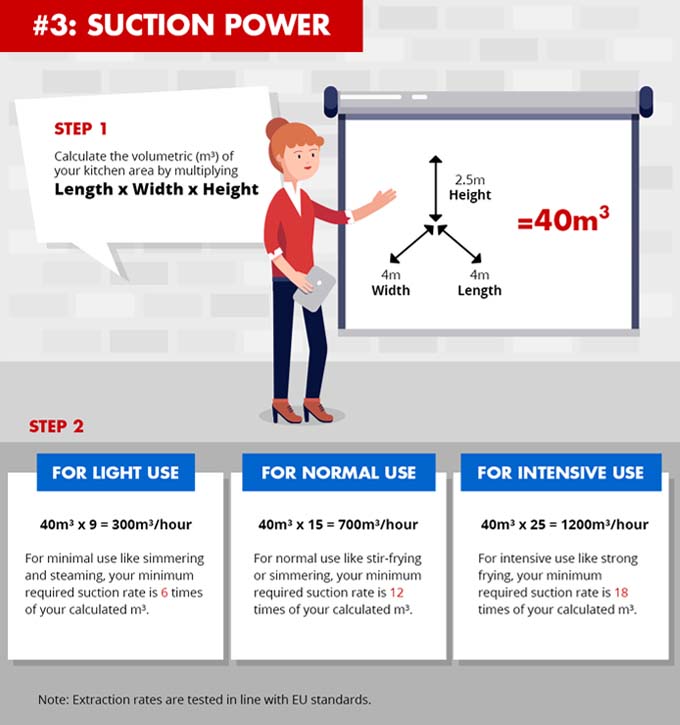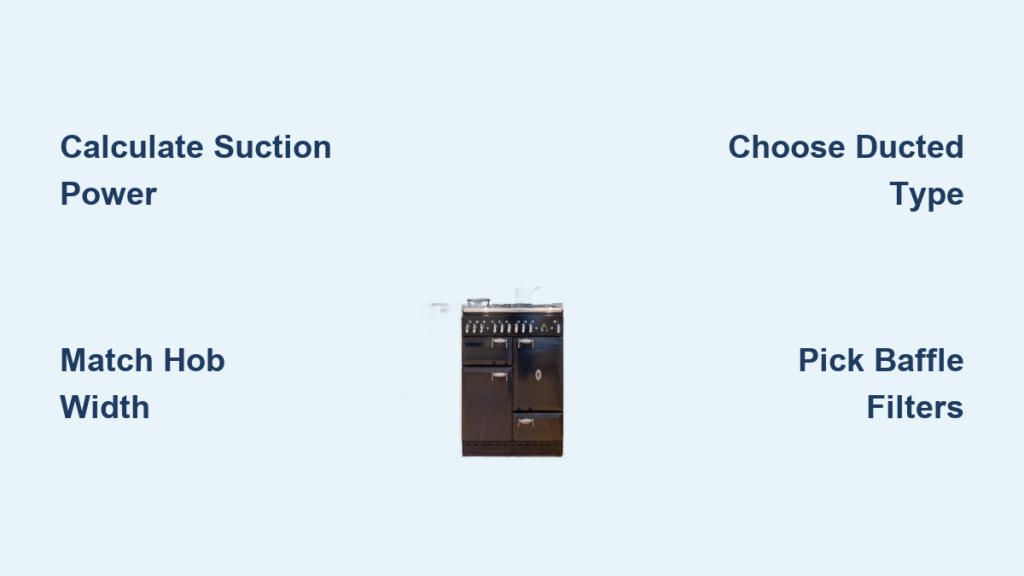Your morning roti shouldn’t taste like last night’s biryani. Yet without the right kitchen chimney, stubborn grease coats your cabinets, lingering odors invade every room, and breathing becomes labored after simple tadka sessions. Most buyers fixate on shiny finishes or horsepower numbers alone—only to battle weak suction, deafening noise, or filters clogged beyond recognition within months. Choosing poorly means daily frustration: wiping grease off walls, enduring smoke alarms, and replacing units prematurely.
This isn’t just about ventilation—it’s about protecting your family’s health from cooking fumes laden with VOCs and fine particulates. When you know exactly how to choose kitchen chimney specs matched to your actual cooking style, kitchen layout, and maintenance tolerance, you’ll invest once in silent, powerful performance that lasts 10+ years. Forget generic advice; we’ll cut through marketing fluff with actionable steps verified for Indian kitchens.
Calculate Your Exact Suction Power Needs

Measure Kitchen Volume Correctly
Grab your tape measure—this isn’t guesswork. Multiply your kitchen’s length × width × height in meters. For a typical 3m × 3m × 2.7m Indian kitchen, that’s 24.3m³. Multiply this by 10 to get your base suction requirement: 243m³/h minimum. Critical mistake: Skipping this step leads to undersized units that can’t handle Indian cooking’s intensity.
Adjust for Indian Cooking Intensity
Tadka, deep-frying, and grilling multiply grease output by 50–100%. Boost your base number accordingly—our 24.3m³ kitchen now needs 365–486m³/h. Always round up to the next standard rating (like 500m³/h) since chimneys rarely hit advertised specs at full duct length.
Use These Kitchen-Specific Benchmarks
- Small closed kitchen (≤8m²): 700–900m³/h (ideal for 1-BHK studio kitchens)
- Medium kitchen (8–15m²): 900–1200m³/h (most 2-BHK homes)
- Large open kitchen (>15m²): 1200–1500m³/h (mandatory for island setups)
Pro tip: If you cook heavy Indian meals daily, jump to the next suction tier—don’t settle for minimums.
Match Chimney Width to Your Hob Exactly

Measure Hob Width Before Anything Else
Don’t assume! Tape-measure your cooktop’s outer edge across all burners. Common widths: 60cm (2-burner), 75cm (3-burner), or 90cm (4–5 burner). This single number dictates your chimney width—deviate, and suction efficiency plummets.
Follow the 0–10cm Width Rule
Your chimney should equal your hob width or extend maximum 10cm beyond either side. Example:
– 60cm hob → 60cm chimney (perfect for 2–3 burners)
– 75–90cm hob → 90cm chimney (covers all burners without gaps)
Warning: A 90cm hood over a 60cm hob looks awkward and wastes energy—reserve oversized units only for future-proofing.
Check Visual Proportionality
Stand back after measuring: Does the chimney dominate the space? In modular kitchens, a 90cm chimney works only over 4–5 burner setups or islands. For standard 3-burner hobs, 60cm maintains balance.
Select the Right Chimney Type for Your Layout
Wall-Mount for Traditional Indian Kitchens
Fixed against rear walls in L-shaped or U-kitchens. Pros: Simplest install, widest price range (₹8k–₹50k). Cons: Requires solid brick/concrete backing—avoid on drywall without reinforcement. Best for closed layouts where ducting to an external wall is possible.
Built-In for Seamless Modular Kitchens
Slides under overhead cabinets for a flush look. Must know: Requires cabinet modification (cutting holes for ducts), adding ₹1,500–₹3,000 to installation. Ideal if aesthetics trump budget—but verify your cabinet depth matches chimney specs (typically 30–45cm).
Island Hoods Only for True Open Kitchens
Suspended over central island hobs. Non-negotiable: Needs ceiling support for 25–50kg weight and a straight duct path upward. Costs 2× wall units (starting ₹45k), but captures smoke from all angles—essential for open-plan spaces where odors spread rapidly.
Avoid Downdraft for Indian Cooking
Rises from countertops but fails with tall kadhai or pressure cookers. Suction drops 40% when pots exceed 15cm height. Only consider for gas stoves in peninsulas with no overhead options—and even then, expect compromised performance during frying.
Ducted vs Ductless: Make the Right Call
Choose Ducted If You Can Run Exterior Ducting
- Pros: 15–30% stronger suction, zero recurring costs, expels all grease/odors outside
- Non-negotiable: Must have ≤12ft duct run with ≤2 bends to an external wall/ceiling
- Test: Can you run a 6–8 inch duct straight outside? If yes, always pick ducted—it’s 3× more effective for Indian cooking.
Opt for Ductless Only When Ducting Is Impossible
- Pros: Plug-and-play install (no ducts), ideal for high-rises/rentals
- Hidden cost: Replace carbon filters every 4–6 months (₹500–₹1,200/set)
- Reality check: Even premium ductless units lose 20% suction over time as filters clog—best for light cooking only.
Pick Filters That Survive Indian Cooking

Baffle Filters: Non-Negotiable for Heavy Frying
Stainless steel curved panels create a grease-trapping zig-zag path. Wash every 3–4 weeks in hot soapy water—handles tadka smoke without clogging. Must-have if you fry daily; mesh filters clog within days under the same conditions.
Filterless Systems Save Time for Busy Cooks
Centrifugal motors fling grease into a collector tray—no filter washing. Empty the tray weekly (takes 2 minutes). Ideal for families who dread maintenance but cook heavy Indian meals.
Never Skip Carbon Filters in Ductless Units
Activated granules absorb odors but lose effectiveness after 150–200 hours of use. Warning: If food smells linger after cleaning filters, replace carbon immediately—don’t waste time “testing” expired filters.
Set Your Budget for Real-World Costs
Entry Level (₹8,000–₹15,000): Compromises You’ll Regret
60cm units with mesh filters (like Glen 6071) max out at 800m³/h—too weak for Indian tadka. Expect 55–65dB noise and yearly filter replacements. Only suitable for 1-BHK kitchens with electric cooktops and light cooking.
Mid-Range (₹15,000–₹30,000): The Sweet Spot

90% of Indian homes need this tier: 90cm baffle-filter models (Elica WDFL 906 HAC) with 1000–1200m³/h suction, auto-clean, and ≤60dB noise. Includes critical 10–15 year motor warranties. Add ₹2,000–₹5,000 for professional duct installation.
Premium (₹30,000+): Worth It for Open Kitchens
Island hoods (KAFF ALEA DHC 90) with 1200–1500m³/h suction, gesture controls, and inverter motors. Justified only for large open kitchens—overkill for standard setups.
Avoid These 4 Costly Buyer Mistakes
Oversized Hood Over Small Hob
A 90cm chimney on a 60cm 2-burner hob wastes suction power and looks disproportionate. Fix: Match widths exactly—no more than 10cm overhang.
Undersized Duct Choking Performance
Using a 4-inch duct for a 1200m³/h motor slashes suction by 50%. Rule: ≤1200m³/h needs 6-inch duct; >1200m³/h requires 8-inch rigid metal duct (never flexible hose inside walls).
Mounting Height Errors
Gas stoves: Mounting >32 inches (80cm) lets smoke escape; <26 inches (65cm) risks flame contact. Critical: Measure from cooktop surface—not floor—to chimney base.
Ignoring Filter Maintenance
Clogged filters reduce suction by 30–40% in 3 months. Set phone reminders: Wash baffle filters every 3 weeks; replace carbon filters every 6 months.
Seal the Deal with Smart Final Checks
Before paying:
1. Verify ducting feasibility: Confirm external wall access within 12ft with ≤2 bends
2. Test noise levels: Stand 3ft away at max speed—if you raise your voice, skip it
3. Check service coverage: Ensure brand has technicians within 25km (Havells/Elica lead here)
4. Demand demo: Watch suction test with tissue paper (must stick firmly at 30cm distance)
Choose once, breathe easy forever. Match suction to your exact kitchen volume, size to hob width, and filters to your actual cooking intensity—not showroom hype. Your perfect kitchen chimney disappears into daily life because it works silently, powerfully, and reliably through every ghee-laden tadka session. When you know how to choose kitchen chimney specs tailored to Indian realities, you’re not buying an appliance—you’re investing in cleaner air, healthier lungs, and years of frustration-free cooking.



